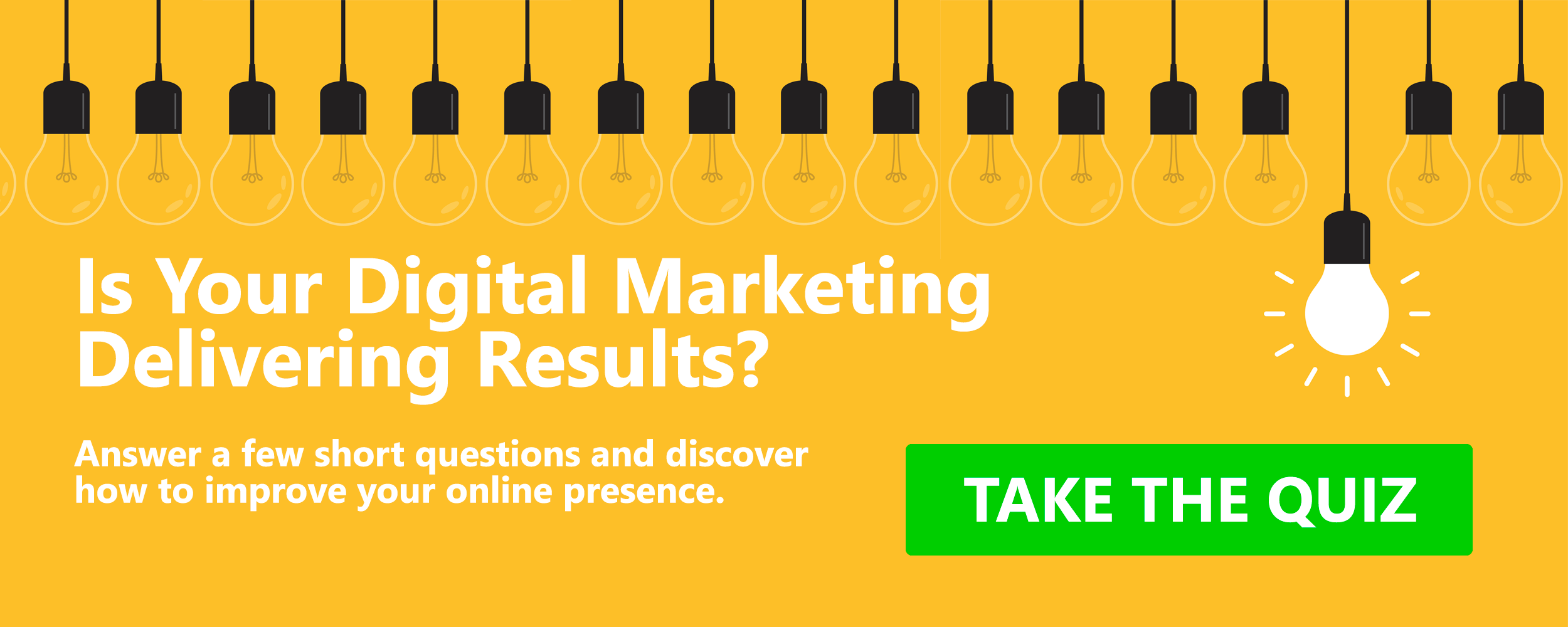In order to grow online, digital marketing is a must – and it’s likely you already know that. Perhaps you’re already making good use of content marketing.
But are you making the most of video content in your digital marketing strategy, and in your social media advertising?
Consider the following video usage statistics:
- People watch on average 1.5 hours of online video per day
- When text or video are available, 72% of people would rather use video to learn about a product or service
- Online shoppers who view demo videos are 1.81x more likely to purchase than those who don’t view videos
- On average, people spend 2.6x more time on pages with video than those without video
- Online video traffic made up 69% of all global consumer internet traffic in 2017
When it comes to video marketing:
- 76% of marketers say video helped them increase sales.
- 76% say of marketers say it helped increase traffic
- 65% of businesses not currently using video marketing say they intend to start in 2018.
- 81% of consumers have been convinced to buy a product/service by watching a brand’s video
When it comes to social media video, these statistics speak for themselves:
- YouTube has over a billion users – almost 1/3 of internet users
- 82% of Twitter users watch video on the platform
- 500 million hours of videos are watched on YouTube every day
- 85% of Facebook videos are watched without any sound
- Native Facebook videos have 10x the reach compared to YouTube links
- Videos on Twitter are 6x as likely to be retweeted as photos
- Snapchat users watch 6.94m videos a minute
If you aren’t already convinced by the impact of video in digital marketing, then it’s worth reconsidering utilising video across your digital marketing.

So why is it that you should be using video across your digital marketing and your social media advertising?
Increase a customer’s understanding of your product or service
With a video, it’s much easier for customers to visualise exactly how they will use your product or service, and what the benefits of it are.
4 of consumers believe demo videos are helpful, and a video can increase people’s understanding of your product or service by 74%
Increase the likelihood of purchases
50% of internet users look for videos related to a product or service before visiting a store.
Do you have any videos of your product or service in action? Well it can certainly help buyers in the earlier stages of researching, or even later down the funnel.
There’s one thing seeing a static image of a product, but if they can see a video, they are much more likely to make a purchase. It’s almost the closest thing to seeing the product in real life – unless you want to go down the VR route. But that’s another story.
Rankings
Video can be a very effective way of climbing the search results.
If you can’t make it to the top of the search results, but there are few videos on YouTube for a specific search term, Google may stick your YouTube video on the top of the SERP page.
In addition, YouTube is also now the #2 search engine in the world – so it’s worth being on the platform in itself to reap the benefits of people searching directly on YouTube as opposed to Google.
Instead of starting their shopping search on Google or Amazon, they may search for reviews on YouTube. If your product, service or brand can be found there, then that is a great start.
Brand awareness
80% of consumers remember the video ads they watch online. That’s much better than the odd blog post or photo they may see shared on the web.
46% of those users then take some action after video a video ad:
- 26% look for more information
- 22% visit the website in the ad
- 15% visit the company in the ad
- 12% purchase the product in the ad
In fact, 64% of website visitors are more likely to purchase a product on a retail site after watching a video.
The most engaging form of content
A video is much more engaging than simply reading on a screen, and can convey much more information than you could do so through a blog post.
Customers are much more likely to watch the whole of your video than they are to read the whole of your blog post, or listen to an entire podcast. The mixture of audio and video can be helpful in engaging multiple senses.
Despite that, short videos work well – especially on social media. Under 60 seconds seems to be the sweet spot, offering enough length to convey information, yet being short enough so people don’t get bored. But if your aim is to simply grab the attention of your audience, short clips of under 30 or even 20 seconds can be beneficial. Even platforms such as Vine made a name for themselves with just 7 seconds – and brands made marketing videos with that limitation just fine. Instagram used to limit to 15 seconds, though that is now at the 60-second mark.
Whatever the purpose and length of your video content, people can absorb what you are presenting much more easily. And that is why conversion rates improve when videos are involved.
Potential for shares, and even going viral
If you can make a really good video that is entertaining, amusing, heart-warming or otherwise – it has the potential to be shared widely throughout your target audience. And potentially go viral within a wider audience.
Videos are much more likely to be engaged with on platforms such as Facebook and Twitter, and much more likely to be shared with friends by users on the platform. They may send directly to friends via Messenger, or WhatsApp – or they may tag them in the comments, or share them onto their page or feed. The potential is endless.
The trick is coming up with a good idea that appeals to your target audience. What can you create that really hits the mark with your ideal customer? It’s more than likely this isn’t a product demo. Perhaps it’s a video on how your business is changing the world. Perhaps it’s the funny way someone has used your product – or an interesting or novel usage. Perhaps it’s user-generated videos that have been submitted to you. The potential is endless.
Not every brand can go viral, and honestly, any brand aiming only to go viral will probably fail. Viral videos are rare, and they can be pre-meditated, but usually, this is pure luck. Of course, big brands can have videos go viral all the time. They have huge brand awareness, huge marketing budgets, highly professional videos and fans around the world. The best viral marketing campaigns are those that start small, but the people around the world add to the sharing of the content, without you actually adding any effort into the spread.

The elements of video are better
If you have a video with humans in, the brain reacts better. We are hardwired to use other people’s faces to gain information and believability.
There’s the emotional element, too. Body language and facial expressions make a big difference in how we react. We love to share positive messages from other human beings, rather than corporate messages.
Movement of video captures attention better than static text or images.
Voices and audio can also help add additional details you simply cannot achieve through photos or text. On top of that, a human voice can give your brand a much more personal feel.
At the end of the day, whether a video is informational, promotional or entertainment, video in itself has been a part of our life for decades. Whether that’s going to the cinema, watching TV at home or otherwise – online video is simply the evolution of this.
Consumers may even see watching promotional videos as entertainment in itself – which is something that other formats can’t claim to be.

Many business owners or marketing executives would love to make use of video more frequently in their digital marketing efforts, but there are reasons not to, such as:
- Business owners may see it as a lot of effort for no gain
- You have no time
- There’s a lack of resource for such time-consuming efforts
- You have no internal skills for filming and video editing
The good news is that producing video doesn’t have to be as daunting as you may think.
Smartphones have phenomenal cameras on them nowadays. You can record in 4k quality with something that is in your pocket. And that’s good enough to get started with.
There’s a whole host of mobile apps that can help you put together a simple video. Or there are online video creation tools, such as:
- Camtasia as a screen recorder and video editor
- Vyond for template videos
- Sellamations for an animated video
- Ripl for animated posts
- Animoto for quick and simple video editing
Of course, if you have the ability, Adobe After Effects and other platforms such as Sony Vegas offer better suites. If not, outsourcing your video creation or editing can be worthwhile to create a professional video that resonates with your audience.
So what kind of videos can you create? There are a number of types of videos that brands typically create, but consider the following:
- How-to videos
- Demonstrations of products
- Live streams of events
- “Behind the scenes” videos
- “Making of” videos
- Animations
- “About the business” videos
- Charity campaigns
- Vlogs (video blogs)
- Interviews
- Webinars
- Presentations
- Tutorials
- Reviews
- Testimonials
- Screen shares or screencasts
- Slideshows
- Tips and guides
- Photo montages
All this comes down to the purpose of your video, and what you are trying to achieve. Which you should outline in your digital marketing strategy.
Overall, whatever your capability, technical ability or budget – you should be creating videos of some sort to help spread the word of your brand, product or service online.
It can make a big difference to your online presence, and help more customers discover how you can help them.













